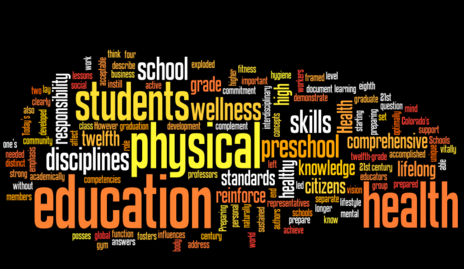| Organization: Give students a stick and have them sit down in their homes. Explain to the students the safety precautions they need to take when playing with the sticks. No High Sticking! Have the students first practice these skills at their homes spaces.
Stick Handling Skills:
- Grip Technique: Place one hand at the top of the stick and the other hand 6-8 inches below it. Now reverse hand and repeat. Which position feels most comfortable to you?
- Ready Position: Holding the stick with both hands, let the edge of the blade of the stick rest on the floor. Bend your knees slightly.
- Holding the stick on the run: Hold your stick in both hands with the blade as low to the floor as possible. Keep your knees bent and your back straight, and look up. Keep the stick below hip level; otherwise, you are “high-sticking,” which is dangerous.
- Practice holding the stick this way while running straight ahead, in a zig-zag, slowly, quickly. Keep your head up, watch where you are going, and run to empty spaces.
- Carry the Puck: Move the puck along the floor so that it always stays in contact with the blade, on the same side only.
- Stick-Handling Technique “Dribbling”: Use this technique to control the puck when you change direction. Move the puck in front of you rather than to your side. Try to feel the puck on your stick by using short taps.
- Practice:
- Carry the puck with your stick around the playing area. Change directions frequently.
- Dribble your puck along a line on the floor with good control.
- Can you push the puck on your forehand going forward and pull the puck toward you with your backhand as you go backwards?
- When the whistle blows once, stop in ready position. The puck should be touching the blade of your stick. When I blow the whistle again, continue dribbling the puck.
- Shuttle-Stick Relay: Form teams of four to six players, each team in shuttle formation facing the other half about 30 feet apart. Each first player of one line has a puck. The first player in line, stick-handle the puck across to the first player of the opposite file, leave the puck for this player, who then repeats your action, and go to the end of the line.
- Zig-Zag Relay: Form lines of four players behind a starting line at one end of the court. Place a row of four cones spaced two meters apart. On go, each player in turn stick-handle a puck through the cones, around the end cone, and directly back to the line to give the puck to the next player in line. Relay ends when everyone has had three turns.
Square–Box Hockey: (Form four teams with an even number of players on each team. Have each team stand on one side of a 30-foot square. Each team numbers off.) When a number is called, all players with that number, run to the middle, dribble a puck out of the middle, through the spot just vacated, CCW around the square, and back through your vacant spot to place the puck back in the middle.
Variations: You can set up these different learning activities into centers if you would like too. |
